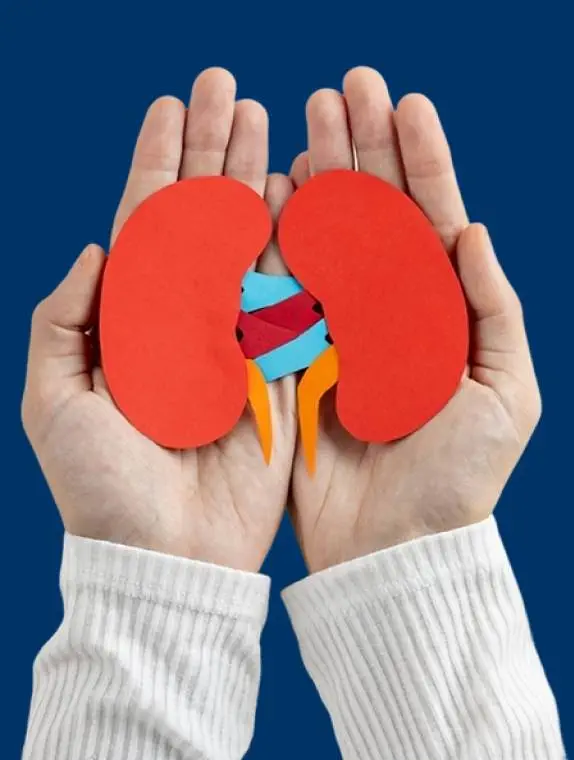Robotic Prostatectomy Procedure

A Surgical Approach to Prostate Cancer Treatment
Dr. Aarthy is a leading expert in innovative robotic prostatectomy, a urological surgery for prostate-related issues. She is one of the foremost urologists in Chennai and has exceptional skills in robotic urological surgeries. She has delivered outstanding oncological and functional results that have distinguished her as the best robotic urologist in Chennai.
Her unique blend of technical proficiency and profound understanding of the male urological anatomy ensures that each patient receives the highest standard of personalised medical attention.
Robotic-assisted laparoscopic prostatectomy offers a minimally invasive approach using state-of-the-art robotic instruments, navigating through several tiny keyhole incisions in the abdomen. This technique allows surgeons to remove the prostate and surrounding tissues with remarkable precision, minimising recovery time and discomfort for patients.
When is Robotic Prostatectomy the Right Choice?
Dr. Aarthy may recommend robotic prostatectomy for the following medical reasons:
Protect Your Prostate & Enhance Your Health

- Before Surgery
- What to Expect?
- Post-Surgical Care
Robotic Prostatectomy Procedure: Preparatory Guidelines
Complete health assessment with comprehensive blood and urine analysis, ECG, and other evaluative tests.
Thorough discussion with your doctor to review your existing medication routine along with instructions to temporarily discontinue blood thinners before surgery, if necessary.
Cessation of smoking and alcohol for a few weeks before your procedure. You should also follow a healthy, nutritious body to ensure a complication-free recovery.
Refrain from eating or drinking for at least 6-8 hours before your procedure to minimise complications during the surgery.
Mild workouts and pelvic floor exercises to maintain your health and expedite your post-operative recovery.
Arrange for your post-surgical transportation to return home and recuperative care during your recovery period.
Robotic Assisted Prostatectomy: What to Expect?
A certified anesthesiologist administers general anaesthesia to ensure you remain unconscious and comfortable throughout the procedure.
Your uro surgeon will make five or six keyhole incisions in your abdomen to insert the high-definition camera and robotic surgical instruments.
The surgeon will align and link the device to set up the robotic system, transmitting crystal-clear 3D visuals and accurate control during the procedure.
Your surgeon will proceed to remove the troublesome prostate gland and its adhering tissues while carefully preserving the surrounding structures and nerves.
After extricating the prostate gland, your surgeon will reconnect the bladder with the urethra using precise sutures to maintain a normal urinary function.
Robotic prostate removal may last for 2-4 hours, depending on your general health and the complexity of your prostate problem.
After the procedure, you will be taken to a recovery room and monitored for post-surgical complications as you awaken from the anaesthesia effect.
Your doctor may recommend hospitalisation for a couple of days to monitor your progress and support your recovery.
Robotic Prostatectomy Removal: Post-Surgical Care
Dr. Aarthy will recommend specific post-surgical guidelines to ensure a speedy, complication-free recovery.
Follow the recommended pain medication schedule and notify us immediately if you experience unusual discomfort or intense pain.
Follow the urinary catheter management guidelines for 7-10 days after recovery and maintain personal hygiene.
Slowly ramp up daily activities while steering clear of heavy lifting and intense exercise for 4 to 6 weeks after the surgery.
Always keep your incisions clean and dry, and look closely for signs of infection, such as unusual discharge, swelling, and redness.
Start practising the recommended pelvic floor exercises when suggested to aid in regaining bladder control.
Increase your dietary intake and ensure adequate hydration to prevent constipation and expedite healing.
TURP Procedure: What to Expect?
Follow these guidelines to expedite your recovery from Transurethral Resection of the Prostate:
Expect one or two days of hospital stay after your TURP surgery. During this period, a catheter will be inserted to drain urine from your bladder as the surgical site heals.
Maintain adequate hydration by consuming enough fluid intake. It will facilitate bladder cleansing and aid your healing process.
Refrain from engaging in strenuous activities, heavy lifting, and intense exercise for at least 4-6 weeks post-procedure.
Be diligent with your follow-up appointments, and inform Dr Aarthy if you experience fever, pain, or bleeding at the surgical site.
Do bladder training exercises to restore your bladder control since it can take time for the bladder to acclimatise post-surgery.
Robotic Prostatectomy:
The Benefits

Surgical Precision
On-point accuracy enables an uncomplicated surgery and the best medical results to enhance your prostate health.
Advanced Approach
Minimally invasive approach with smaller incisions helps quicker healing with less pain and minimum or nil post-surgical complications.
Enhanced Outcomes
Improved bladder and prostate function results in fewer complications and better renal health in the long term.
Minimum Blood Loss
Less blood loss due to smaller incisions, minimal intervention and fewer sutures.
Superior Visualisation
Crystal-clear images of the surgical area improve your surgeon’s accuracy in repairing and restoring the internal structures.
Shorter Hospitalisation
Minimal intervention surgery enables you to return home within a few days as opposed to lengthy hospital stays for conventional surgery.
Minimum Complications
Better visualisation of the surgical site leads to precision surgery that minimises the risk of complications during and after the surgery.
Prostate Health Matters Take Action Today






